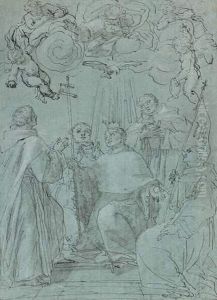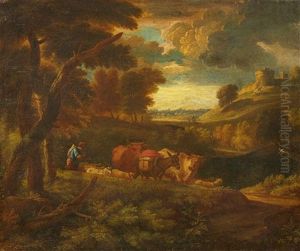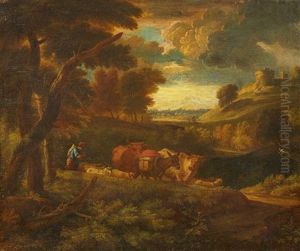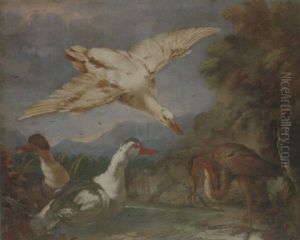Pietro Cignaroli Paintings
Pietro Cignaroli, an Italian painter, was born in 1665 in Verona, Italy, to a family with significant artistic heritage. His brother, Giambettino Cignaroli, was also a prominent painter. Pietro's artistic career is less documented than that of his brother, and as such, there is less information available about his life and works.
Cignaroli was active during the Baroque period, a time known for its dramatic use of light and shadow, and its overall grandeur in the arts. His works include religious and historical subjects, painted in a style that was influenced by the dominant trends of the Italian Baroque. However, Cignaroli's work also hints at the coming Rococo movement, which would emphasize more playful themes and ornate details.
Not much is known about Cignaroli's training, but it is likely that he received his early education from the artistic environment of his family and in Verona, which was a significant artistic center at the time. He may also have been influenced by other Italian artists of the period, such as Paolo Veronese and the dynamic works of Caravaggio.
Pietro Cignaroli's contributions to Italian art, while overshadowed by those of his brother and other contemporaries, remain a testament to the rich artistic culture of Italy during the late 17th and early 18th centuries. His works are part of the tapestry of Italian Baroque painting, contributing to the era's exploration of religious themes, human emotion, and the interplay of light and color.
Cignaroli's death in 1720 marked the end of his artistic output, but his legacy continued through the works of his brother and the continued influence of the Baroque style on Italian art. While specific details about his life and career may be sparse, Cignaroli's work nonetheless adds to our understanding of the period's artistic achievements.



